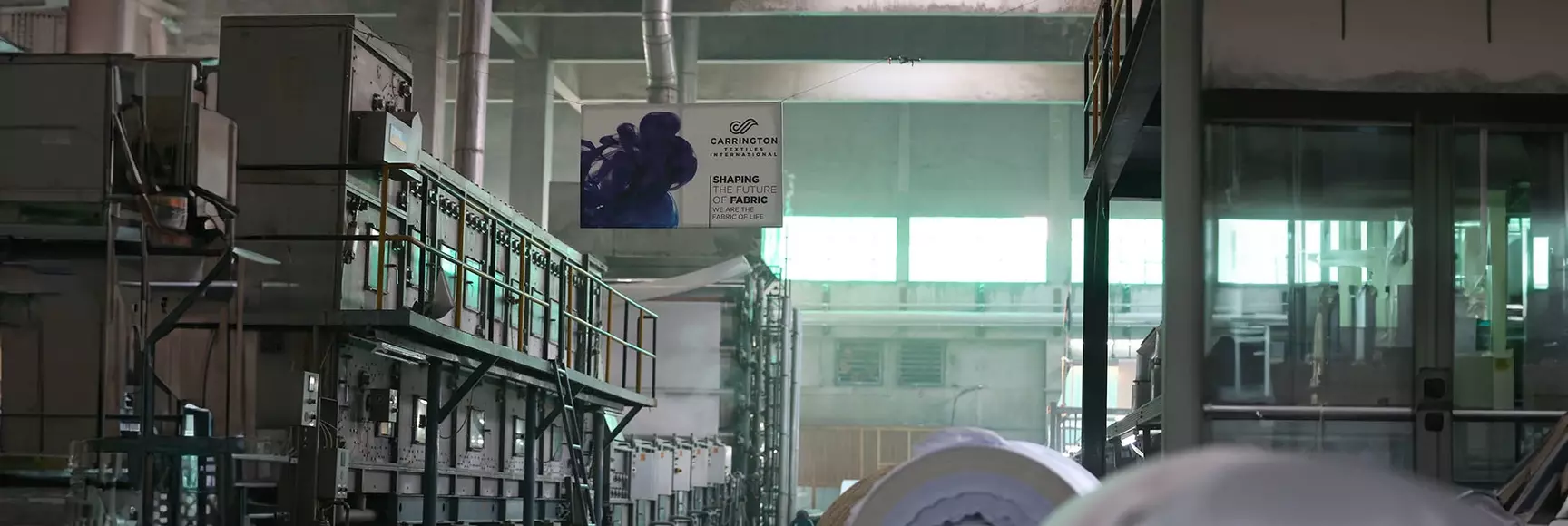In the early months of the COVID-19 pandemic, personal protective equipment supplies were running dangerously low all over the world. In hospitals, care homes, and pharmacies, fabrics with anti-viral and anti-microbial properties were badly needed to protect frontline healthcare workers. So Carrington Textiles stepped up.
In short order, the over-130-year-old workwear textile manufacturer ramped up production at its facility in the northwest of England, turning out five times more workwear fabric than it typically produces. Over the course of just five weeks, Carrington Textiles delivered over 3.5 million meters of fabric to the National Health Service in the UK, as well as various hospitals and other medical facilities across Europe.
“We are incredibly proud to be part of this battle during uncertain times when we all unite to fight against this virus,” said Neil Davey, Carrington Textiles’ managing director, in 2020.
After more than a century in the workwear business, it’s no surprise Carrington Textiles was able to meet the moment. Today, the brand produces more than 130 million meters of workwear fabric annually in its four factories around the world, for brands including Jaguar, Airbus, McDonald’s, Coca-Cola, and more. In five of its fabrics, LYCRA® and COOLMAX® fibers add comfort, fit, flexibility, and temperature management. We’re proud to be a partner.
"The LYCRA Company team brings exceptional technical expertise and a thorough understanding of fibers, making them a trusted partner in developing high-performance workwear fabrics,” said Anles Cabrera, group international marketing manager at Carrington Textiles. “Their collaborative approach and consistent support make a real difference."
Carrington Textiles makes fabrics for a range of industries, including the military, heavy industry, healthcare, hospitality, and oil and gas. According to Cabrera, LYCRA® and COOLMAX® fibers have provided the answer to a demand in the market for more comfortable workwear.
“We’ve seen, in the last few years, a move from very rigid, heavy workwear to more comfortable workwear. There have been studies showing that people want to wear a uniform that looks good and feels good; there are a lot of mental health benefits to it,” he said.
Cabrera said the stretchy Spartan HT Flex Lite fabric is a good example of this shift: The fabric, which is made with LYCRA® fiber, has been extremely popular for Carrington Textiles because it’s one of very few stretch military fabrics on the market. “There's a demand now that fabrics be comfortable for the soldiers to wear,” said Cabrera. “So this fabric has been an important development for us.”
Anles Cabrera (above left); fabric in production at a Carrington Textiles factory in Portugal.
Each one of Carrington Textiles’ fabrics begins with a consumer demand: comfort, fit, moisture control, flame resistance, etc. From there, the company develops fabrics and puts them through rigorous testing. To test flame-retardant fabrics, for instance, Carrington Textiles uses an independent third-party laboratory that employs specialized sensor-covered mannequins. These mannequins are dressed in garments made from the company's fabrics, exposed to a flash fire, and the sensor data is analyzed to predict potential burn injuries.
Finally, when they’ve endured rigorous testing and proven themselves ready for market, they make their way to brands and eventually end users, who wear them to treat patients, cook and serve food, build electric vehicles, and more. Their LYCRA® and COOLMAX® fibers make them all the more desirable — key ingredients that contribute to the success of the product ranges.
“Protection and comfort are two huge topics in the industry,” said Cabrera. “That’s why LYCRA® brand is an important partner for us now. As this trend moves from fashion to workwear, it’s very important that we have the right fibers.”
Discover our workwear solutions
From warming and cooling to comfort and durability
-
Carrington Textiles
Anles Cabrera
Group international marketing manager -
-
The LYCRA Company
David Capdevila
Product marketing and merchandising manager -
-
The LYCRA Company
Marc Souto
Technical sales manager, southwestern Europe -
